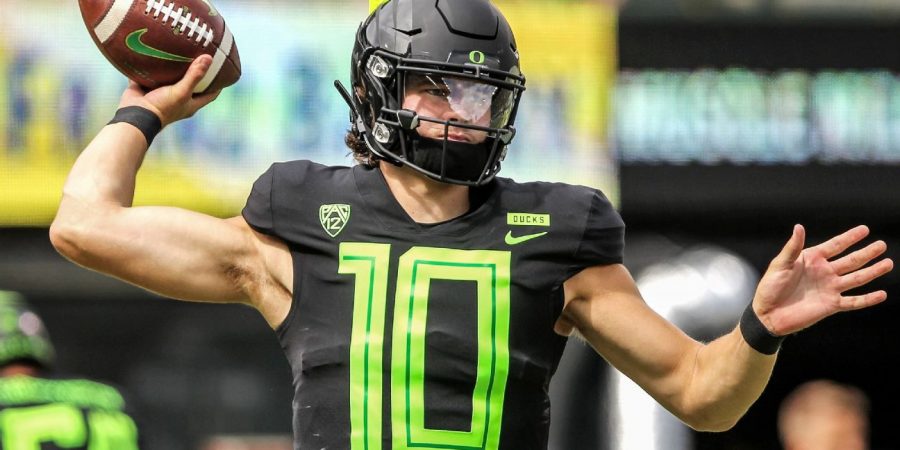Only two days remain before the showdown between the Oregon Ducks and the Auburn Tigers, as the two teams will meet for just the second time ever before a primetime national television audience under the bright lights of AT&T Stadium in Arlington, Texas.
The game is the only matchup on the Week 1 slate pitting ranked teams against one another, setting the stage for both teams to dominate the headlines on college football’s opening weekend. Before that happens, though, WFOD takes a look at the biggest questions facing the Ducks entering Saturday’s big game.
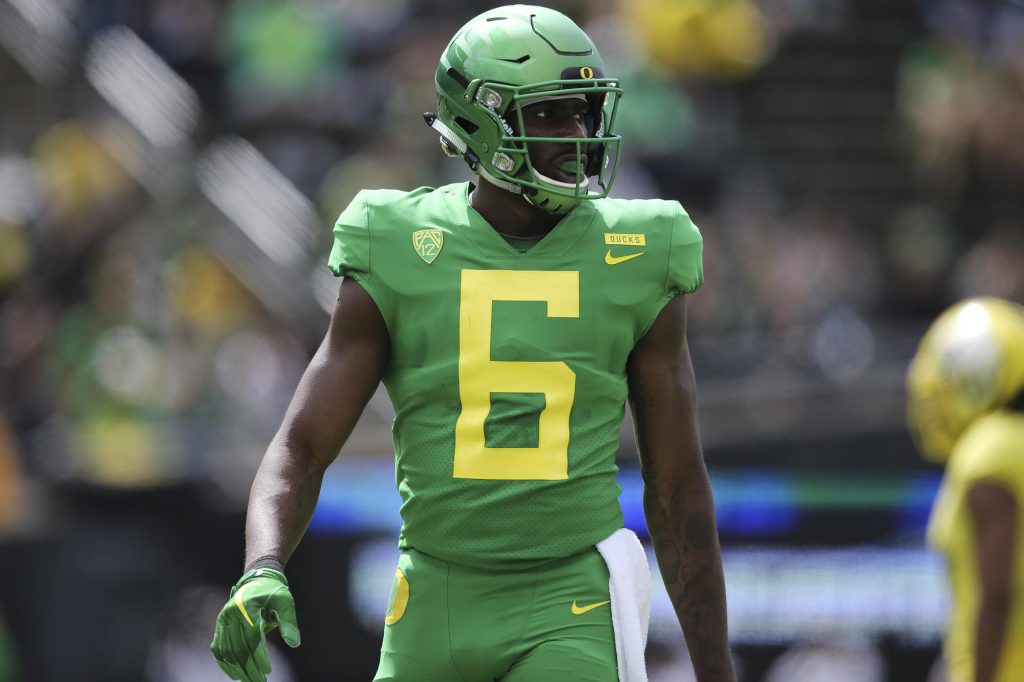
1. Can Oregon’s receivers find success against a talented Auburn secondary?
Considering the preposterous rash of injuries that have ravaged the Ducks’ receiving corp over the past few weeks, it feels like a minor miracle that Oregon is able to field a game-ready group in time for Saturday’s matchup versus Auburn. Senior Brenden Schooler (foot) and true freshmen Mycah Pittman (shoulder) and JR Waters (foot) are each out for at least the next month, leaving veterans Juwan Johnson, Johnny Johnson, and Jaylon Redd as the primary torch bearers for this group for the next several weeks. Redshirt freshman Bryan Addison and true freshman Josh Delgado will help supplement that trio, but for the most part, the onus will be on the three veterans to emerge as reliable pass catching options for Justin Herbert through the air.
Following through to that end is easier said than done, however, as the Tigers boast a veteran and talented secondary that will be eager to ground Herbert and Oregon’s prospective aerial attack. Johnson, Johnson, and Redd don’t have to be all-world for the Ducks to come away with the victory, but their ability to make timely plays and help move the chains for the offense could prove critical if the Ducks are to come away with the victory.
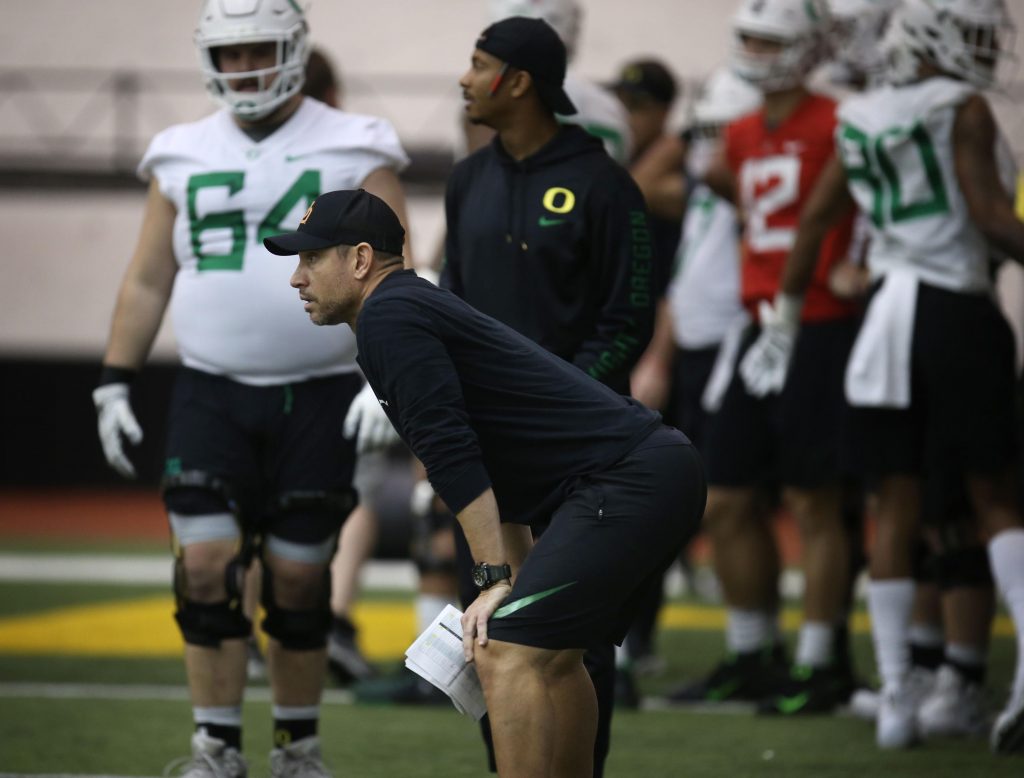
2. What, if anything, has changed offensively over the offseason?
It’s a shame that Schooler, Pittman, and Waters are injured, as we likely will have a much more complete understanding of what this offense is capable of in Marcus Arroyo’s second year as offensive coordinator once the Ducks are completely healthy at receiver. Nonetheless, Saturday’s test versus Auburn should provide a pretty solid indication of the amount of progress that’s been made on offense following Oregon’s fits of inconsistency last season. The bittersweet taste left in the mouths of fans following the Ducks’ unsightly 7-6 win over Michigan State in the Redbox Bowl still lingers, as the Oregon offense produced just 203 yards of total offense against the rugged Spartan defense.
A repeat performance of that game this Saturday would be crushing for Arroyo, who came under fire last season for stubborn play-calling and an unimaginative approach to offense altogether. Many will rightfully point to the 52 drops perpetrated by Oregon pass catchers a major culprit in the team’s stunningly gun-shy offensive approach last season. That, plus Herbert’s inability (or unwillingness) to target other receivers not named Dillon Mitchell, didn’t help matters either. However, there’s no doubt that Arroyo had a prominent role in the, at times, predictable and one-dimensional offense that was on display. How the Ducks have evolved in this area, and to what degree, will be fascinating to see.
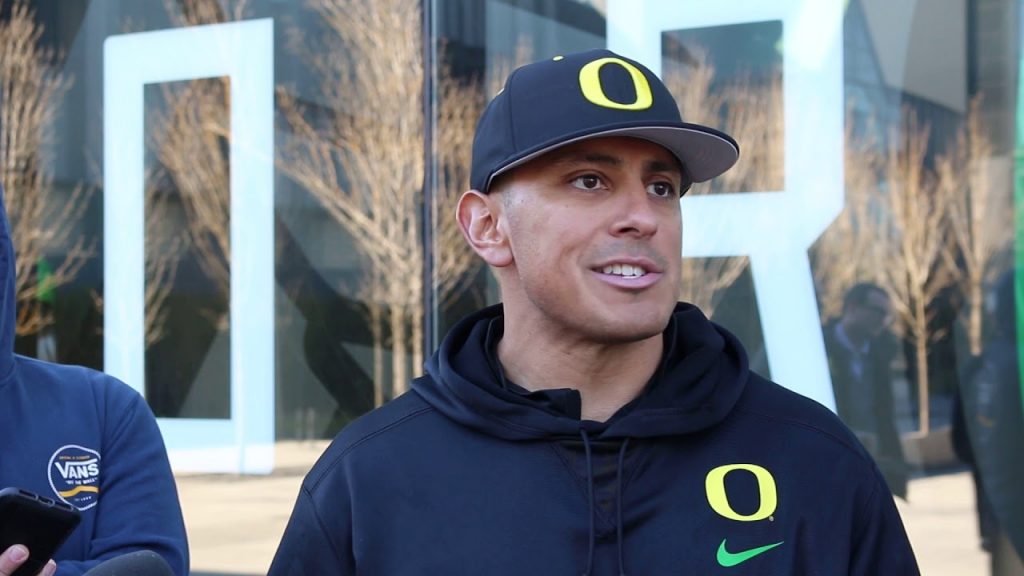
3. What does the defense look like under new defensive coordinator Andy Avalos?
We know the Ducks plan to be multiple in their alignments, buuuuut that’s about it. Per the game notes distributed by the Oregon Athletic Communications team, the Ducks’ base defense is officially listed as a 3-4, but a quick look at the depth chart shows that Oregon first year defensive coordinator Andy Avalos has myriad personnel to run just about whatever he likes on that side of the ball. How effective that unit is, however, will be a different story altogether.
Before he and the school “mutually” parted ways earlier this year, former defensive coordinator Jim Leavitt helped engineer a monumental turnaround that took Oregon’s defense from one of the nation’s worst (126th in total defense in 2016) to one of the nation’s most improved (46th in 2017) in his first year with the Ducks. Oregon slightly regressed to 55th nationally in total defense in year two under Leavitt before his contract was ultimately bought out by the university, but given what the Ducks return this season, one wonders how much further Avalos could take this group. At Boise State, Avalos’ defenses were known for their ability to get after the quarterback (ranked 10th nationally in sacks in 2018) and force turnovers (in seven seasons a member of the Broncos defensive staff, Boise State ranked in the top 25 in turnovers forced six times). If the up-and-coming assistant can duplicate those efforts in Eugene beginning with a big performance Saturday, the sky could very well be the limit.
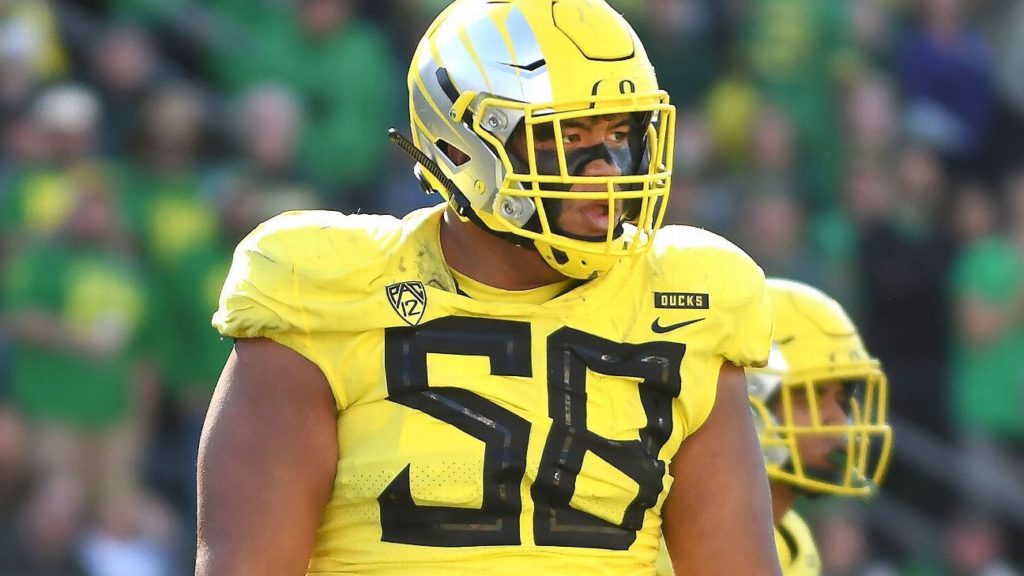
4. How will the matchup in the trenches between Oregon’s OL and Auburn’s DL play out?
The battle that will be waged between Oregon’s offensive line and Auburn’s defensive line at the line of scrimmage will be the heavyweight bout within the heavyweight bout Saturday night in Arlington. Since the offseason began, both units have been touted by college football media as the crème de la crème of their respective position groups nationally.
On one side you have Oregon, which returns 153 combined starts along the offensive line (the most entering a season since 2011) and perhaps the deepest collection of talent that’s ever been assembled at the position in Eugene. On the other side is Auburn, which boasts three potential first round draft picks in Derrick Brown, Nick Coe, and Marlon Davidson and arguably the best defensive line in the country despite the presence of perennial power Alabama in Auburn’s division within the SEC. This is the kind of head-to-head matchup that Oregon head coach and offensive line maestro Mario Cristobal lives for, but it will be by far his biggest challenge since arriving at Oregon prior to the 2017 season.

